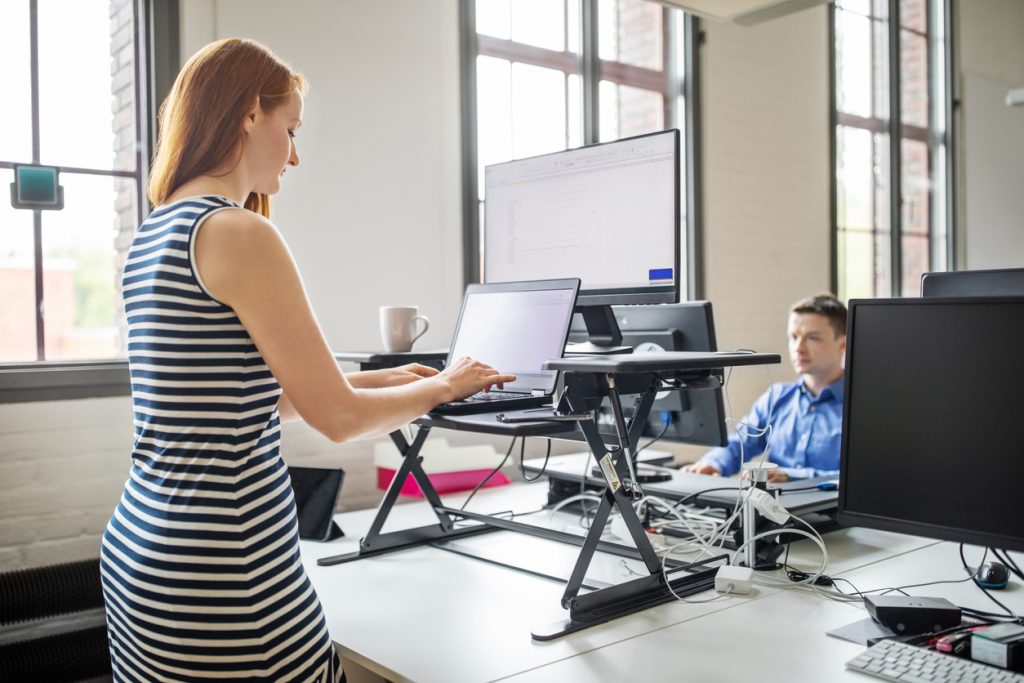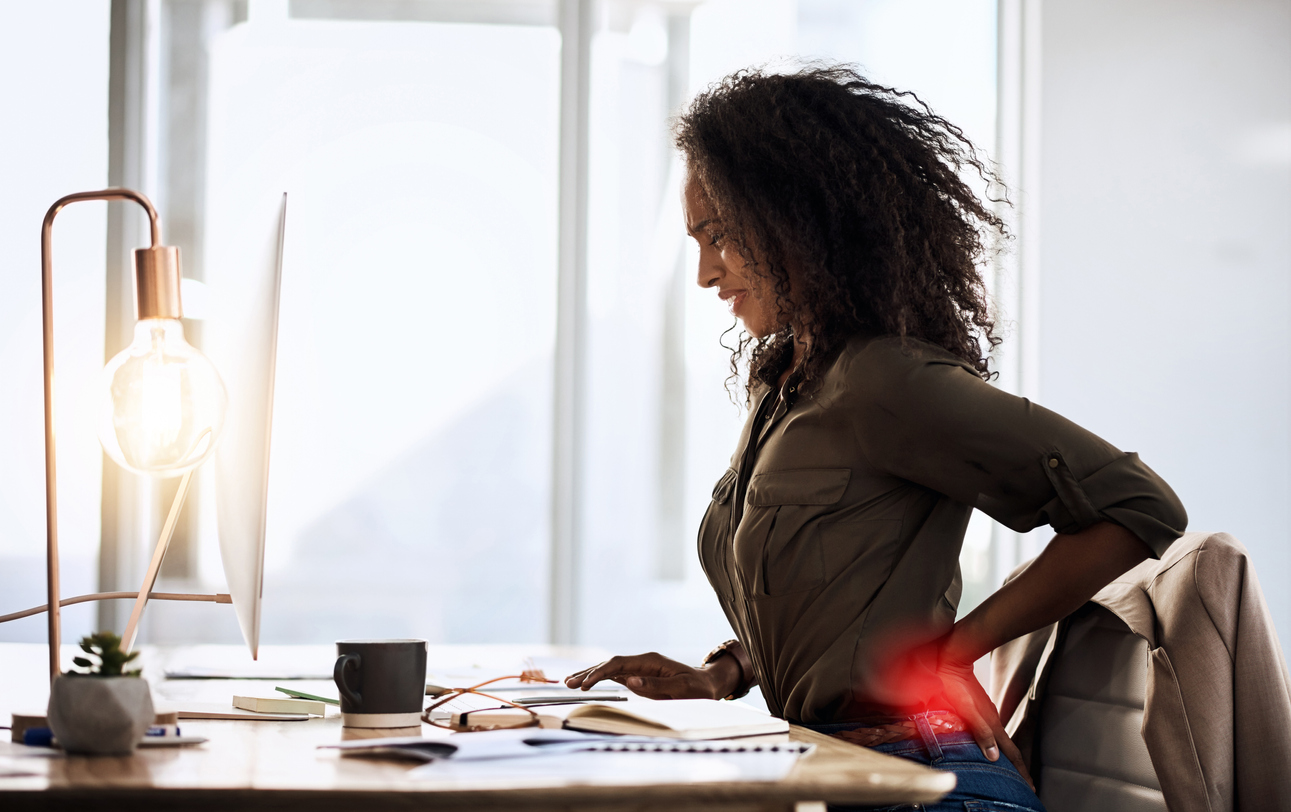People who spend hours working at their computer often complain of back pain. This can lead to a drop in productivity at work and accounts for many employee sick days taken. Back or neck pain related to computer use commonly results from three problems: poor posture, too much sitting, and inactivity.
Poor Posture

There is much truth to the old adage of sitting up straight. Many people slouch when working at a desk. This could be due to how the work station is arranged or the desk chair being uncomfortable. The computer screen should be at eye level to avoid having to look up or down too long. The height of the keyboard should be adjusted so that the elbows are bent at a 90 degree angle. The shoulders should be relaxed but not slumped.
The desk chair should support the low back. It should be comfortable enough for the user to sit back in the chair with feet flat on the floor. Make the necessary adjustments until the chair feels right.
People may be using eyeglasses or readers that are not the right prescription. This causes them to strain or tilt the neck in an uncomfortable position to see the screen. It may be time for a vision check.
Too Much Sitting
The way the work station is set up may be contributing to back pain. An adjustable height desk may be helpful. These sit-stand desks allow the user to adjust the height so that they can either sit or stand while working. Sitting for long periods of time can cause the muscles in the low back to tighten. Standing allows people to stretch more and engage their core, leg, and back muscles.
Several studies, including one published by the CDC, found that the use of height adjustable desks reduced upper back and neck pain by 54% after a month. Study participants reported a 32% improvement in low back pain.

Most desks designed for standing allow the computer screen to be at eye level. This helps prevent neck strain since the individual is not having to look down. A major benefit of height adjustable desks is that the user can alternate between periods of sitting and periods of standing throughout the day.
Inactivity
Take regular breaks. Being sedentary for hours makes the muscles stiff and tense. Just standing up and moving around can loosen and relax tight muscles. Gentle stretches help and can be done sitting or standing. Stretching exercises for the neck include a slow side to side rotation, a forward and backward tilt, and a side tilt where the head is gently tilted toward the shoulder. The following stretches may help relieve low back strain.
- Side Bend – Reach the right arm over the head while bending to the left. Repeat on the opposite side.
- Seated twist – Sit up tall, exhale, gently twist to the right side while looking over the right shoulder. Repeat on the left side.
- Downward facing dog stretch – Sit upright with feet flat on the floor. Raise hands over head. Slowly bend forward until forearms are flat on the desk with palms face down. Hold for five seconds.
Next Steps
If you are suffering from acute or chronic back or neck pain, it may be time to see a specialist. The physicians at Atlanta Brain and Spine Care are here to help. Contact us today for an appointment.


